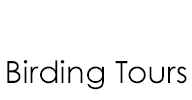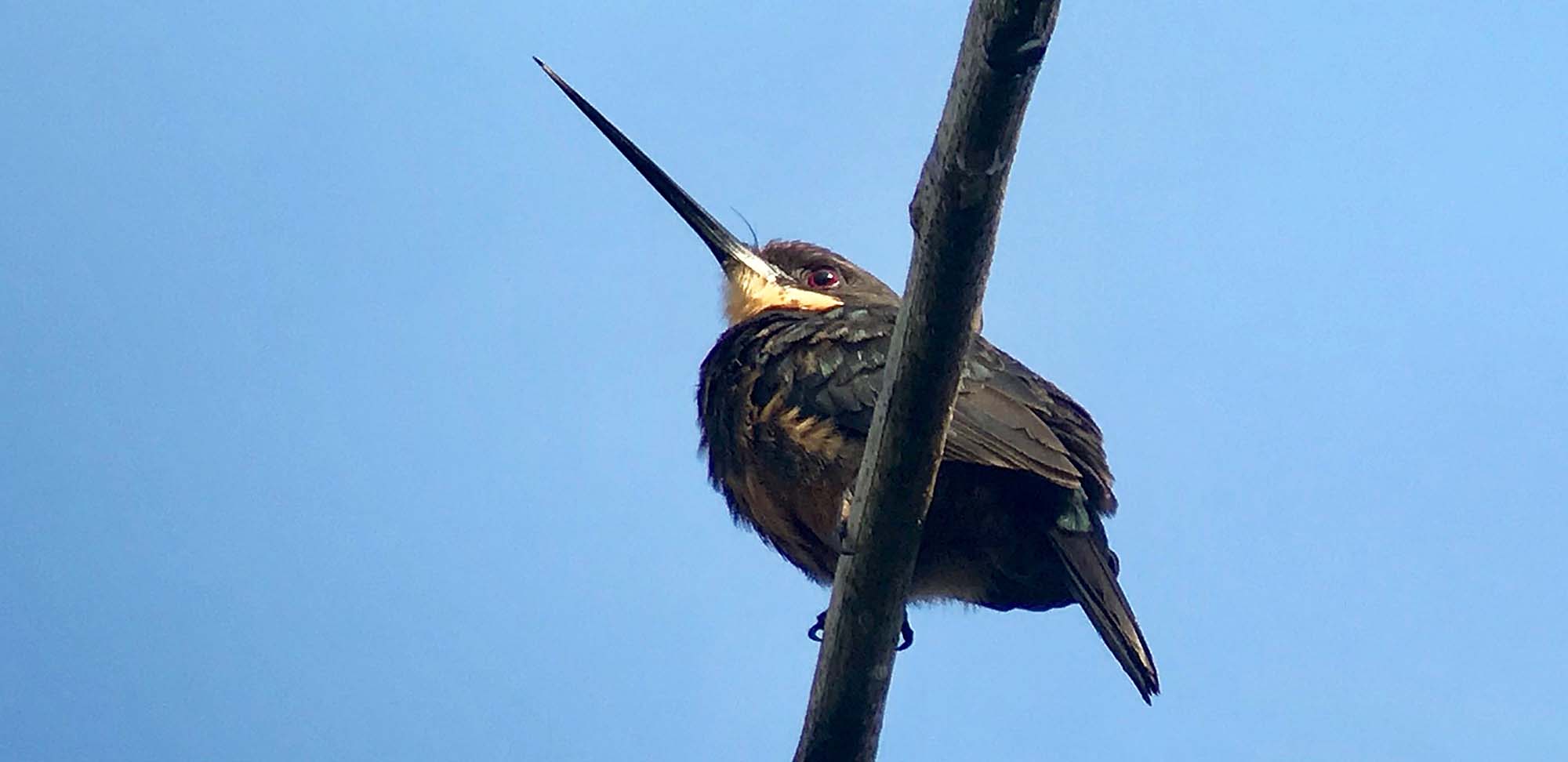Not sure which Panama tour to choose? Click to see a complete listing and comparison of all our Panama trips.
Darien Province in eastern Panama has long been a well-known yet remote destination for birding in Central America. Given that a number of South American bird species reach the northern limit of their range here, Darien is one of those must-go places. The Canopy Camp, inaugurated in 2012, has made the logistics of reaching and birding this region wonderfully simple. This "camp" continues the tradition of Panama's Canopy Tower and Canopy Lodge in combining a great birding site with extremely comfortable quarters, outstanding food, and unsurpassed attention to a great birding experience. The brainchild of Raul Arias, whose vision of sustainable ecotourism has revolutionized birding in Panama, the Canopy Camp is located in a shaded clearing adjacent to tall forest and hills. Accommodations are in large safari-style tents that are atop metal platforms with wood decking. Each tent has at least two twin beds (some with a single queen bed), chairs, shelving, and adjacent private bathrooms with sink, shower, and flush toilets. There is a central building with the dining room, kitchen, and library, with a veranda for scanning the forest. The camp is essentially all solar at this point except for a few propane items in the kitchen.
However, despite the comfortable lodge, the birds are the main attraction here. This area of lowland Darien has no fewer than 25 specialty birds that are essentially restricted to eastern Panama, as well as a plethora of more widespread tropical species. Such species as Pale-bellied Hermit, Barred Puffbird, Gray-cheeked Nunlet, Red-rumped Woodpecker, Ochre-lored (Yellow-breasted) Flycatcher, White-headed Wren, and Orange-crowned Oriole may be seen right from the clearing. Scanning from the veranda one might locate soaring King Vultures, Semiplumbeous Hawk, Ornate Hawk-Eagle, Keel-billed and Yellow-throated toucans, White-necked Puffbird, and groups of parrots flying off to work in the morning. The camp's trail system allows access to tall forest where trogons, woodcreepers, antbirds, and a number of Golden-headed Manakins can be found. Even relaxing in one of the hammocks during a siesta one might see Golden-hooded Tanagers, Green Honeycreepers, and Thick-billed Euphonias feeding in a fruiting tree. Some of our days will be spent visiting nearby areas with different habitats, and thus, different birds. Walking a forested road will get us into more likely habitat for Red-throated Caracara, Chestnut-fronted Macaw, Dusky-backed Jacamar, Golden-green Woodpecker, Double-banded Graytail, Red-billed Scythebill, Black Antshrike, Rusty-winged Antwren, Bare-crowned Antbird, Gray-headed Elaenia, White-vented Conebill, and Black Oropendola.
Getting to a local marsh and open forest will help us find Rufescent Tiger-Heron, Cocoi Heron, White-throated Crake, Spot-breasted Woodpecker, and the unusual Black-capped Donacobius. Another day will find us boarding boats to explore the riverine habitat for water birds, perched raptors, and forest edge species such as the very local Spectacled Parrotlet. For the past few years there has been an active Harpy Eagle nest in the area and with the ongoing local knowledge it is expected to continue. We will make all efforts to visit a nest site of this magnificent bird of prey. Additionally, a couple of Crested Eagle nests have been found in the last few years, and although this is not as reliable for the future as a Harpy, there is a possibility of seeing this more rarely observed species. To get to these sites it is likely we will be taking boat trips in motorized dugouts on one of the river systems of eastern Darien.
Even for birders with considerable experience in Middle America, the Canopy Camp holds numerous specialties and offers the most comfortable entry into the rich lowlands of Darien. We are sure you will find this tour to be a great experience in birding one of the still out-of-the way places in Central America.
Special Note: We have opted to limit our Field Guides Panama tours to just 8 participants. In addition to the Field Guides staff leader, we will have a local Panamanian guide. We feel this provides the best overall experience, as some trails are narrow and a larger group will make it difficult for everyone to get good, satisfying looks at the birds. This has an impact on the tour fee, but we believe this intimacy and expertise are well worth a slight premium.
Select the KEY INFO tab or click here for our itinerary plus space requests, status, fees, limits, and guides for any departure.


